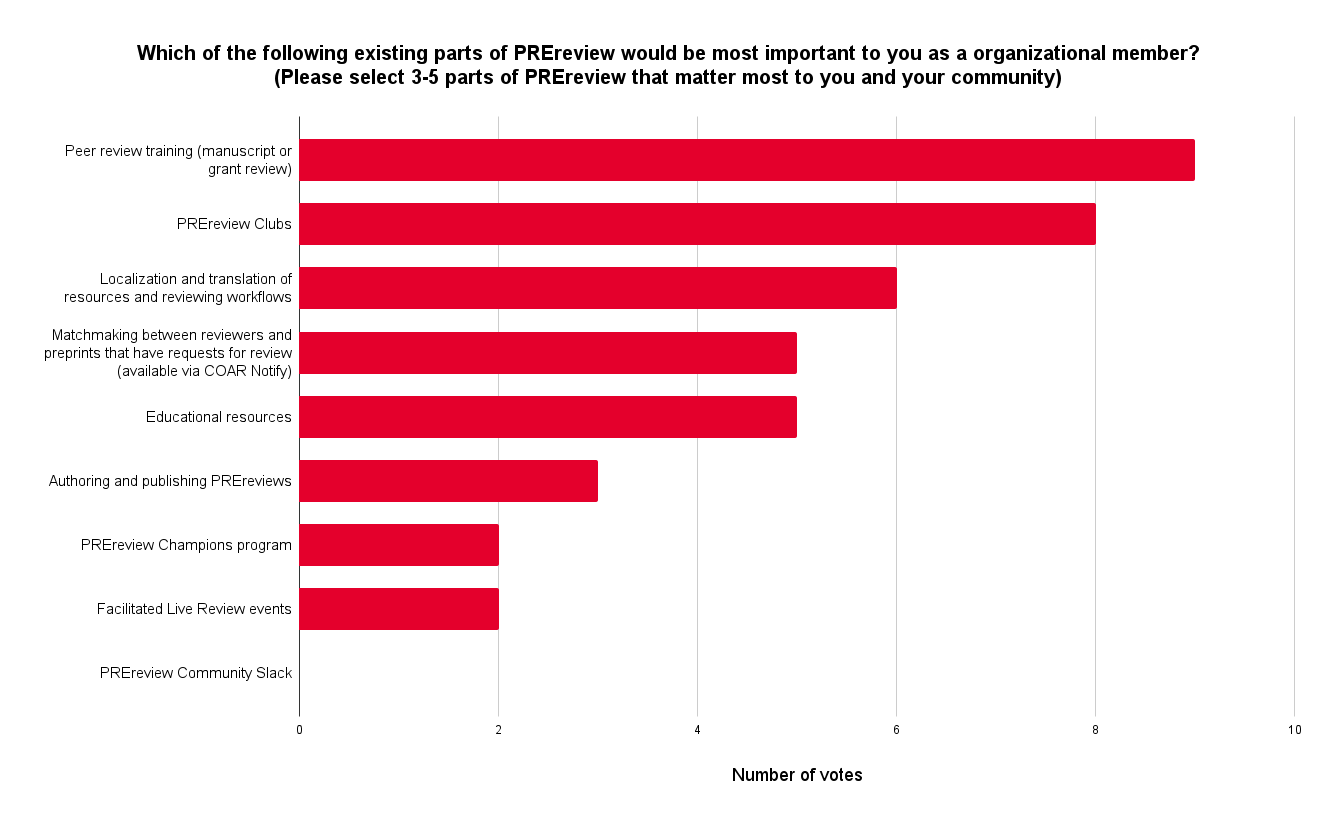
On April 10 we held two community design sprints - at two different times to accommodate our global community - aimed at collecting input to help us shape our new Organizational Membership Model. The calls were attended by 17 community members in total, including representatives from funding agencies, publishers, and research institutions.
The calls had the following goals:
- To learn about what’s already working for our community members
- To identify any challenges they would like a PREreview organizational membership model to address
- To learn how they would prioritize future work on PREreview to encourage participation in an organizational membership model
- And to summarize the notes into a blog post on what we learned, which is this!
A bit of context…
While philanthropy has served as PREreview's primary funding source since its establishment in 2017 (read more on how we're funded), depending exclusively on this model proves unsustainable in the long run and limits our ability to authentically represent the diversity within the communities we serve. We want to create a more sustainable and participatory revenue model that continues to center our values whilst also enhancing collaborations with existing and new value-aligned partners.
By developing an organizational membership model we hope:
- To build community support and a more resilient revenue model to maintain open and free infrastructure for all.
- To cultivate a forum where value-aligned organizations can exchange ideas and insights, bolstering the efficacy of collective efforts aimed at fostering an open, equitable, and community-driven scholarly evaluation system.
What we learned
We alternated between conducting voting exercises aimed at pinpointing the most crucial aspects of PREreview for our community members, while also engaging participants with open-ended inquiries to gain insights into their perspectives on our most distinctive and valuable current offerings. Participants engaged by collaboratively writing on a notes document, writing in the Zoom chat, and/or vocalizing their answers.
Here is what they said:

What do you think are PREreview’s most unique and valuable current offerings? (Open-ended question)
Below, we grouped participants’ answers under common themes.
Inclusivity & Openness
- Anyone can participate!
- Decolonizing the review process, which enables communities traditionally marginalized to feel they can participate.
- The focus on equity and transparency.
- PREreview serves as a model for inclusive and equitable practices.
- True journal agnosticism.
Skills building
- The ability to post PREreviews pseudonymously as a safe entry point into public peer review
- The PREreview sandbox provides a non-exposed environment for researchers not used to reviewing preprints to practice without concern for judgment
- I believe PREreview addresses an important, often-unmet need in the community for better training on peer review.
- Recognition for preprint reviews with DOIs that can be persistently cited and the ability to write peer review activity automatically to ORCID profiles.
Collaboration
- COAR Notify and the Community Slack for review requests
- Facilitating live preprint journal clubs (Live Reviews)
- The PREreview Clubs feature has the potential to revive the spirit of learned societies (specifically, their intended role in peer review)

What would you expect to find in a pitch from PREreview asking you to join as a member? Which parts of existing and future work would you want us to feature in that messaging? What else would you want to know about PREreview to make that pitch effective at recruiting you as an organizational member?
Suggestions included:
- An overview of the important and unique services that PREreview provides - that anyone can participate, the ability to sign reviews pseudonymously, reviews receive DOIs, ORCID integration, Clubs, and a digest of club activities.
- A compelling narrative about the mission, the transformative impact you are aiming to achieve, and PREreview's innovative approaches to collaborative peer review.
- Highlighting the inclusive and supportive community, and commitment to diversity and equity.
- I would like data (on what you did, when, how) but I also like to know the story of how those data (those activities, actions) you show me help someone or improve something. The last one should be related to me or my community/region.
- The benefit a particular activity or set of activities on/using PREreview could bring to the recipient organization.
- Personalized messaging
- Case studies/examples
- Transparent pricing
- As an organization, the most effective pitch would be the connection between preprints and peer review…Knowing what checks and trainings are in place for PREreview participants would make a partnership more likely, as it would allow my organization to either streamline or supplement its own peer review processes.
Next steps
We thank all participants of these design sprints for spending their time and sharing their expertise with us. Our team is working on incorporating the feedback and suggestions into a brand-new organizational membership model which we hope to launch early this summer.
If your organization was to join PREreview as an organizational member what would you like to see as part of the offerings attached to the membership?
Let us know your thoughts either by contacting us at community@prereview.org or via our #community-feedback on Slack.
Stay connected
We’ll keep up with all of your requests and reviews to work out any issues that come up with the process and to best understand how our communities of authors, other stakeholders, and reviewers are connecting through our request-a-review features. You can get all the latest news about PREreview and new features like this one by subscribing to our newsletter and joining our Slack community.
About the author(s)
Vanessa Fairhurst is Community Manager at PREreview. She is based in Oxford, UK, and outside of campaigning for more equity in scholarly peer review, you can find her reading fantasy fiction, playing board games, and going for long walks by the river.
